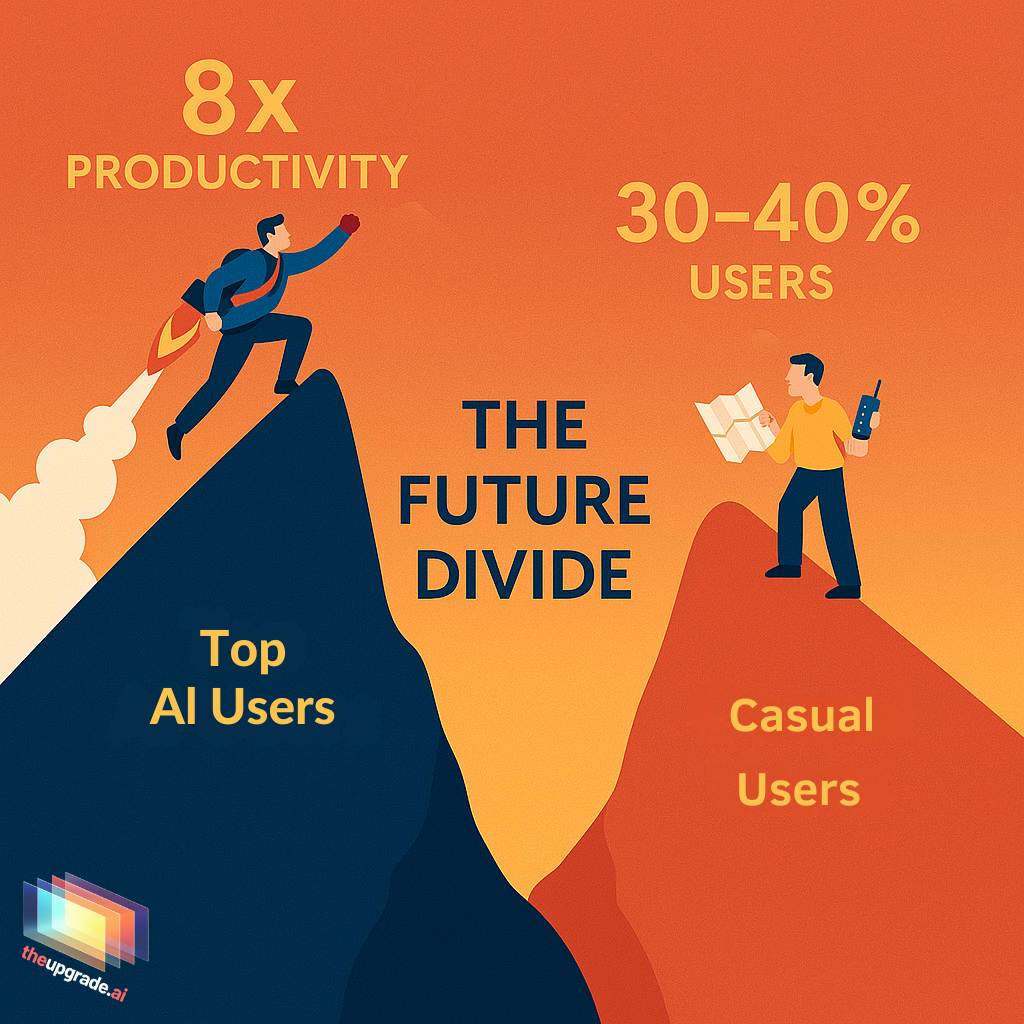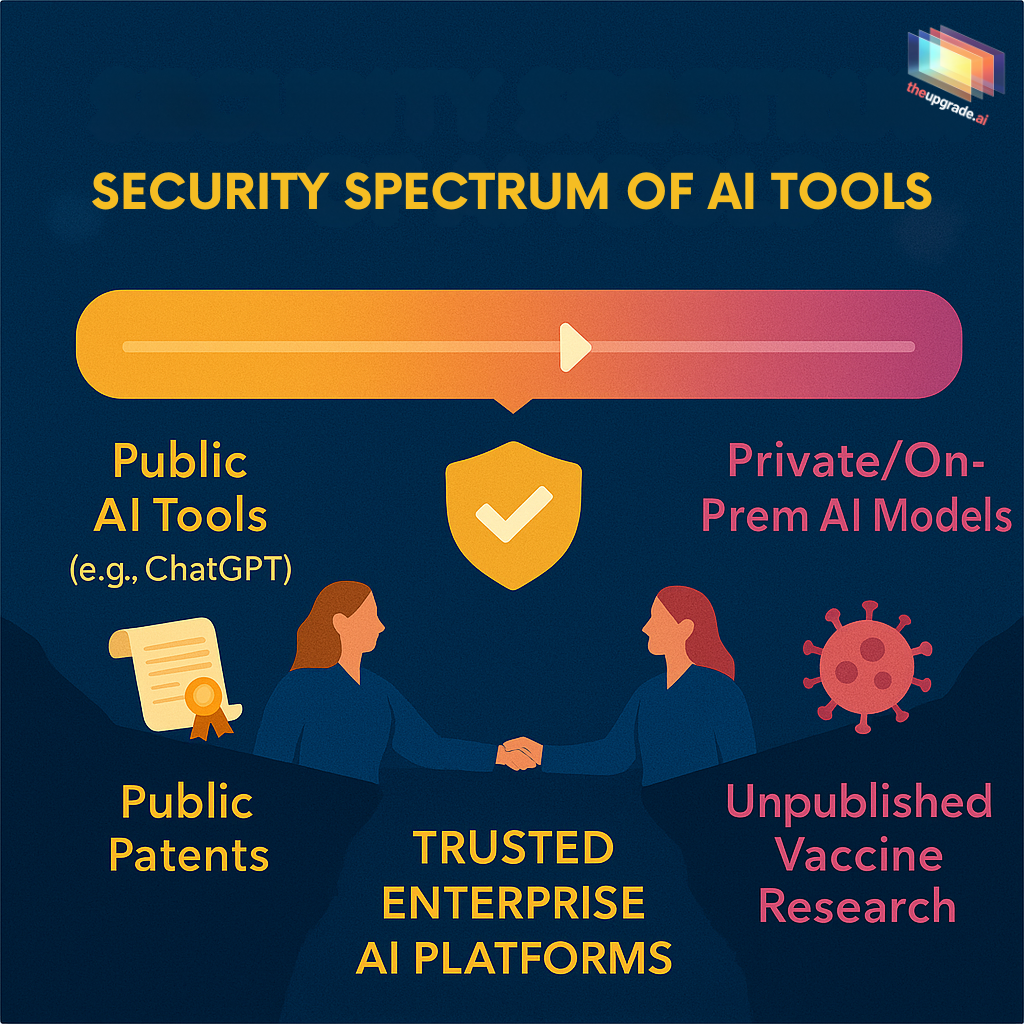AI for Tech Transfer: Revolutionizing Innovation Commercialization in 2025
Mar 31, 2025
The gap between the AI-powered future and the database-driven is becoming a canyon.
The tech transfer world is trapped in digital amber—still worshipping at the altar of database searches while the rest of us are already riding AI waves that are completely rewiring how innovations jump from lab notebooks to real-world impact.
As someone who's witnessed multiple tech paradigm shifts firsthand—from pre-GUI coding to web revolution to social media explosion—I recognize the signs of a system about to be completely reconfigured. Tech transfer stands at that precipice right now, stuck between old-school methodology and mind-bending AI potential.
THE INNOVATION GRAVEYARD: WHY TECH TRANSFER IS BROKEN
Universities are hoarding treasure troves of mind-bending research while their tech transfer offices are trying to sell it using digital tools that belong in a museum, not a pipeline to the future. The post-pandemic exodus of talent has created a massive brain drain, with institutional knowledge walking out the door and rarely coming back.
"After the pandemic, a lot of people left," as tech transfer expert Dr. D'vorah Graeser puts it. "This means institutional knowledge is rapidly being lost and it can be really hard to keep on top of all these different relationships."
Add budget cuts to brain drain, and you've got a perfect storm. Companies have less money, universities have less staff, and everyone's playing innovation matchmaker with outdated tools—it's like trying to find your soulmate using a fax machine.

AI AS RELATIONSHIP CATALYST, NOT DATABASE REPLACEMENT
AI isn't just another corporate spreadsheet with a fancy name—it's an intelligence amplifier that lets you build genuine human connections at scale while keeping your actual humanity intact. This isn't about replacing human judgment; it's about amplifying it.
The days of cold email blasts are mercifully fucking over. Good riddance. AI can now analyze what makes companies tick, pinpoint the perfect contacts, and craft messages that actually speak to their specific needs—not generic corporate nonsense about "synergies" and "paradigm shifts."
"The days of the cold email blast are, I'm very happy to say, over," notes Graeser. "AI helps you focus on the one thing AI cannot do well: making those human relationships."
When that company exec responds to your perfectly-crafted AI-assisted outreach, you're not stuck thinking "oh shit, now what?"—because your AI toolkit has already helped you anticipate objections and prepare responses that keep the conversation flowing. It's like having a relationship coach whispering in your ear, but for innovation commercialization.

THE KNOWLEDGE PRESERVATION REVOLUTION
When your veterans bail—and trust me, they will—they take decades of irreplaceable human expertise with them. The right AI approach doesn't just "capture data"—it preserves the weird, messy, brilliant human wisdom that makes your organization actually work.
AI can analyze past successful licensing deals, identify patterns invisible to human observation, and create an organizational memory system that transcends individual turnover. It's not just about documenting procedures—it's about capturing the instincts, the hunches, the hard-won insights that make great tech transfer professionals worth their weight in patents.
The productivity gap between masters and dabblers is becoming a chasm. Harvard research shows top AI users see 4-8X productivity boosts, while casual users barely hit 30-40% improvement. This isn't just about efficiency—it's about survival in the coming tech transfer landscape.

THE SECURITY PARADOX OF INNOVATION
The same folks losing their minds about AI security are usually the ones freely handing over their data bloodstream to random apps, corporate platforms, and every damn cookie popup they mindlessly click "accept" on. Tech transfer offices face legitimate concerns about sharing unpublished innovations with AI tools, but this requires nuanced risk assessment, not blanket fear.
Federal labs operate with different security requirements than university TTOs, and private research institutes have their own standards. There's no one-size-fits-all approach, which is why understanding the specific security profiles of different AI tools is critical. Some are data-hungry vampires; others are designed with privacy at their core.
The real question isn't whether to use AI—it's which tool for which sensitivity level. You wouldn't use the same AI for analyzing public patent databases as you would for exploring unpublished vaccine research. That's not just common sense; it's security hygiene.

BEYOND DATABASES: THE MARKET MATCHMAKING REVOLUTION
Finding the right commercial partner isn't about scraping company directories—it's about getting inside their nervous system, understanding what keeps their executives staring at the ceiling at 3am, and knowing which problems they'd sacrifice their firstborn to solve.
As Graeser explains, "If it's a pharmaceutical company then they want to know about drugs typically for particular disease areas that do particular things, maybe that were tested on particular animal models." Surface-level matching isn't enough anymore—companies expect you to understand their specific needs, not just their general industry.
AI excels at this depth of analysis, diving into company pipelines, research priorities, and strategic directions to uncover partnership opportunities that would remain invisible to traditional approaches. It's like having X-ray vision into corporate priorities and pain points.

THE NEW TECH TRANSFER WORKFLOW: AUGMENTED PROFESSIONALS
AI won't replace tech transfer professionals—it'll transform them into superhuman dealmakers with the time to focus on what actually matters: human relationships. When AI handles 80% of the evaluation and sourcing process, humans can focus on the high-value negotiation and relationship building that actually closes deals.
This isn't about working less; it's about working smarter. AI handles the grunt work while you focus on the uniquely human art of aligning interests, building trust, and navigating the complex human dynamics that make or break commercialization deals.
The tech transfer professionals who thrive in this new landscape won't be the ones who resist AI—they'll be the ones who embrace it as a partner, not just a tool. As one expert puts it, "AI is not going to take over and then we're all going to go sit on a beach and sip piña coladas." The work remains; it just transforms.

THE HORIZON: RIDE THE WAVE OR DROWN
Within two years, we'll see a complete bifurcation of the tech transfer world—those using AI strategically will thrive while the traditionalists slowly fade into irrelevance. This isn't speculation; it's already happening.
"The future of AI isn't coming—it's here," warns Graeser. "If you're not integrating AI now, you're already behind." Every day you wait to develop your AI strategy is a day your competitors are sprinting ahead, forming relationships and closing deals that might have been yours.
SUBSCRIBE FOR WEEKLY LIFE LESSONS
Lorem ipsum dolor sit amet, metus at rhoncus dapibus, habitasse vitae cubilia odio sed.
We hate SPAM. We will never sell your information, for any reason.


